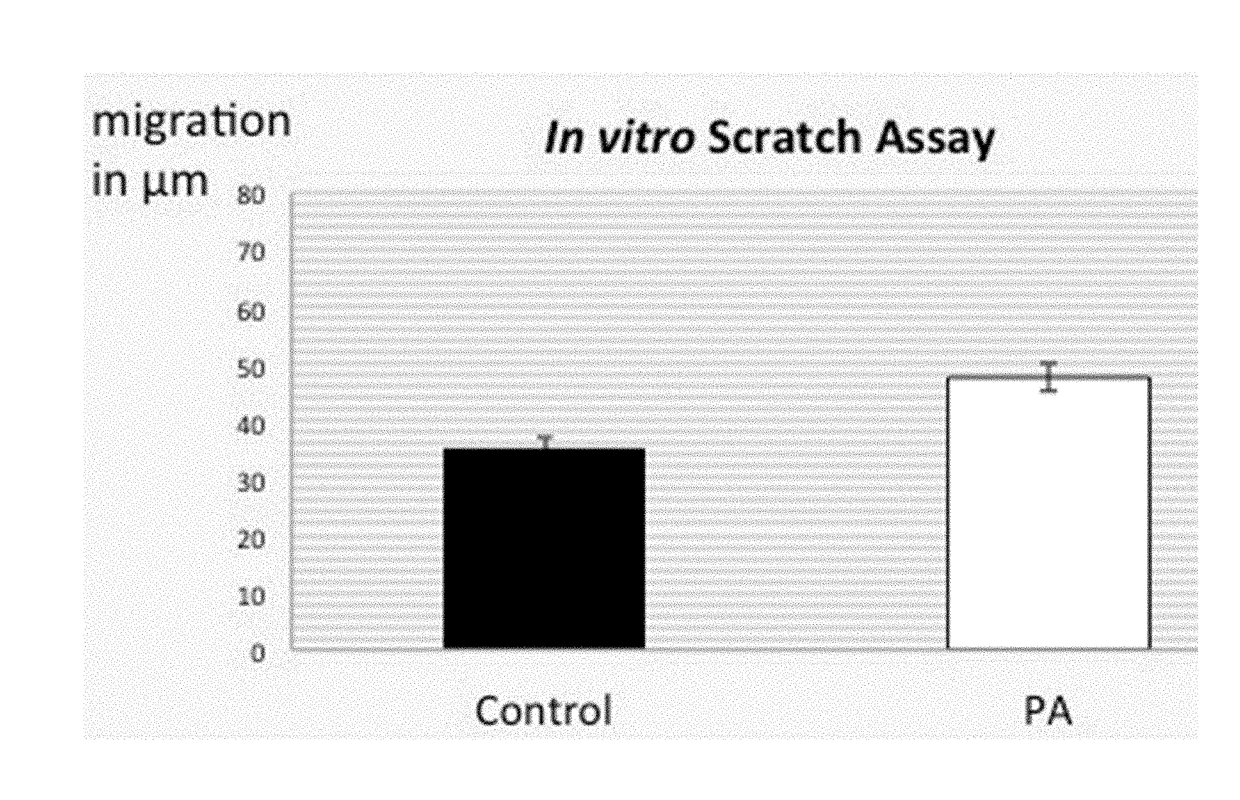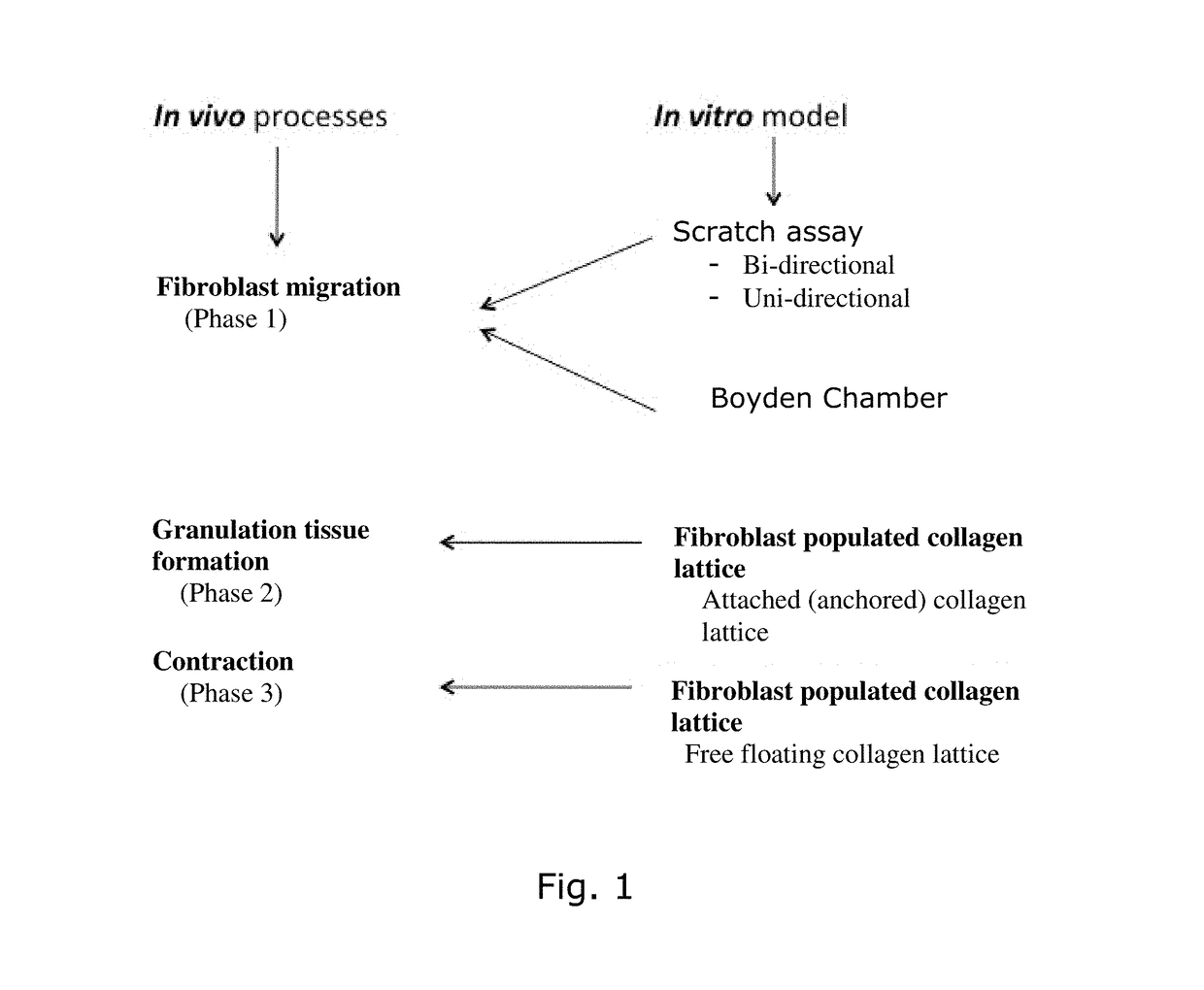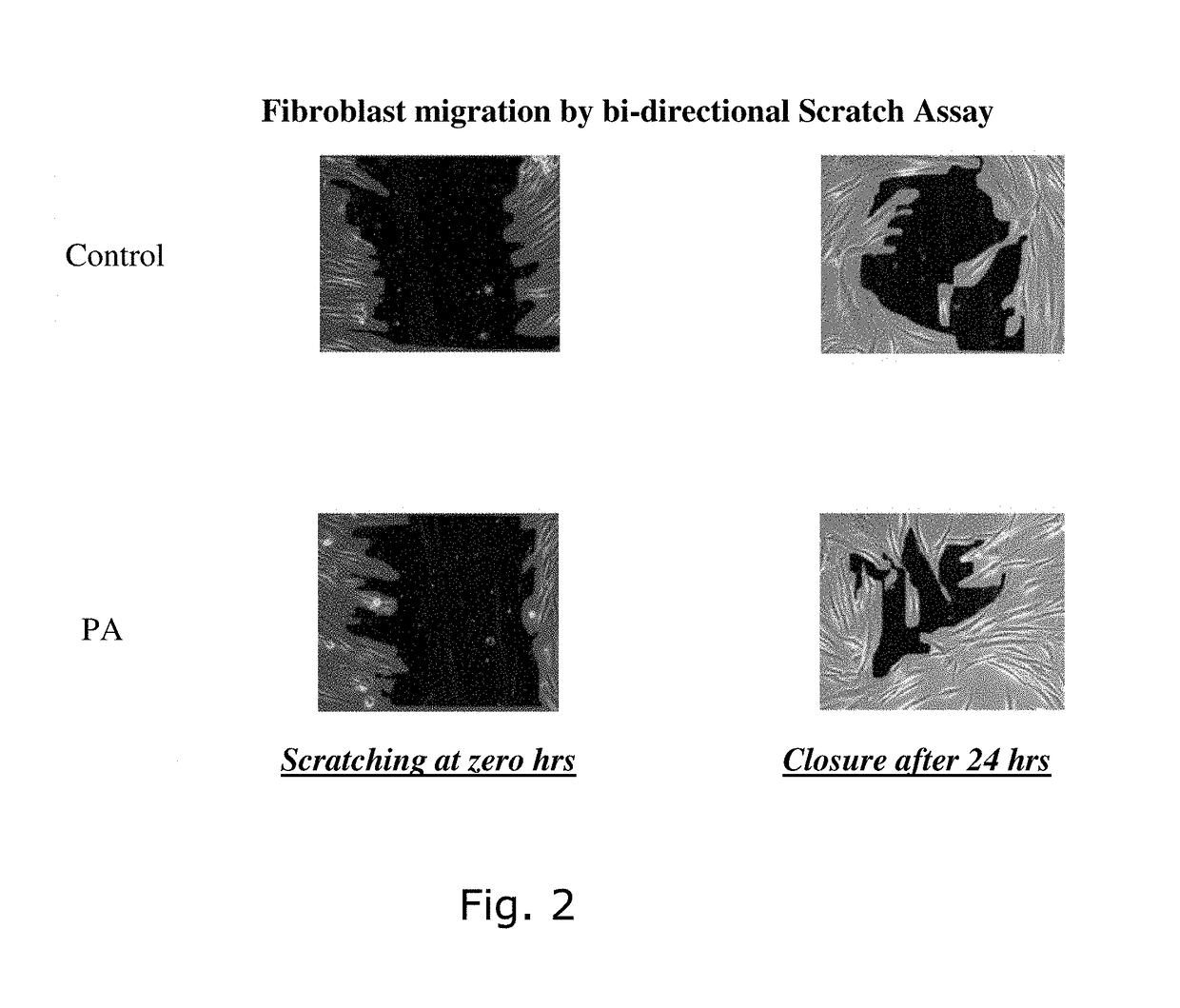3-(4-hydroxyphenyl) propanoic acid amide for use in tissue repair and/or skin brightening
a technology of propanoic acid amide and tissue repair, which is applied in the field of 3(4-hydroxyphenyl) propanoic acid amide for use in tissue repair and/or skin brightening, can solve the problems of cosmetics, lack of pigmentation reduction effect, and instability of peroxides, so as to reduce the production of melanin and enhance the mobility ability
- Summary
- Abstract
- Description
- Claims
- Application Information
AI Technical Summary
Benefits of technology
Problems solved by technology
Method used
Image
Examples
example 1
Distinct Mechanism of Fibroblasts in Dermis Equivalents
Free Floating Collagen Lattice
[0066]Aim: to study contraction of ECM molecules by fibroblasts
Protocol:
[0067]Collagen type I from bovine skin can be purchased from IBFB Pharma GmbH, Leipzig, Germany and is prepared according to the distributed protocols.
[0068]Cells are trypsinized, suspended in complete growth medium and carefully mixed in the collagen solution (collagen in 0.9×DMEM, 10% FCS, 0.2 mM NaOH, prepared at room temperature). Final cell concentrations might range from 0.8×104 to 3×105 cells / ml lattice. Final concentration of collagen might range from 0.3-0.6 mg / ml lattice.
[0069]After mixing, the solution is placed onto bacteriological Petri dishes and immediately put back into the incubator.
[0070]Half an hour after polymerization in the incubator, the lattices are carefully detached from the borders of the dishes using a pipette tip. It is important that the Free Floating Collagen Lattices “swim” freely in the medium.
[0...
example 2
i Directional Cell Migration
Aim: To Determine Effects of 3-(4-Hydroxyphenyf)Propanoic Acid Amide Treatments on Fibroblasts Migration.
Introduction
[0104]Delicate cell monolayers at confluency are mechanically disrupted leaving an area devoid of cells. This procedure is accomplished by a “scrape” made on the cells and later advancement of the adjacent cells into the open area by cell mechanical migration, which is monitored by microscopy. Depending on the cell type, the covering process can take from many hours to less than a day, which is entirely dependent on the type of cells and extent of the scrape. The rate or the extent of migration of the cells (often termed as repopulation rate) can be calculated by a series of photomicrographs.
Protocol
[0105]Plate fibroblasts at a density 1×104 in 35 mm tissue culture plates and incubate for three days using novel test compounds with a control at 37° C., 5% CO2.[0106]At confluency, displace a group of cells within the monolayer by making one s...
example 3
igmentation Assay
To Study the Effects of 3-(4-Hydroxyphenyf)Propanoic Acid Amide on Melanin Production in Human Cells
Introduction
[0117]Melanin pigments, the determinants of skin color are produced by Melanocytes located on the basal layer separating the dermis and epidermis in the skin of the human body. The enzyme Tyrosinase is responsible for catalyzing various steps in the melanin pigment biosynthetic pathway responsible for skin cell pigmentation. Accordingly, Tyrosinase inhibition promotes skin de-pigmentation (skin-lightning).
Aim of the Study
[0118]The present study is aimed at investigating the skin lightning effects using an animal model system in vitro
[0119]The assay was standardized using B10F16 mouse melanocytes with cell numbers at a density ranging from 5×104 to 1×105 cells per ml. It was found that 105 cells were sufficient to get enough cell pellet and the cells were seeded in Petri dishes in equal numbers. The following day the cells were pre-trea...
PUM
| Property | Measurement | Unit |
|---|---|---|
| concentration | aaaaa | aaaaa |
| pH | aaaaa | aaaaa |
| concentration | aaaaa | aaaaa |
Abstract
Description
Claims
Application Information
 Login to View More
Login to View More - R&D
- Intellectual Property
- Life Sciences
- Materials
- Tech Scout
- Unparalleled Data Quality
- Higher Quality Content
- 60% Fewer Hallucinations
Browse by: Latest US Patents, China's latest patents, Technical Efficacy Thesaurus, Application Domain, Technology Topic, Popular Technical Reports.
© 2025 PatSnap. All rights reserved.Legal|Privacy policy|Modern Slavery Act Transparency Statement|Sitemap|About US| Contact US: help@patsnap.com



